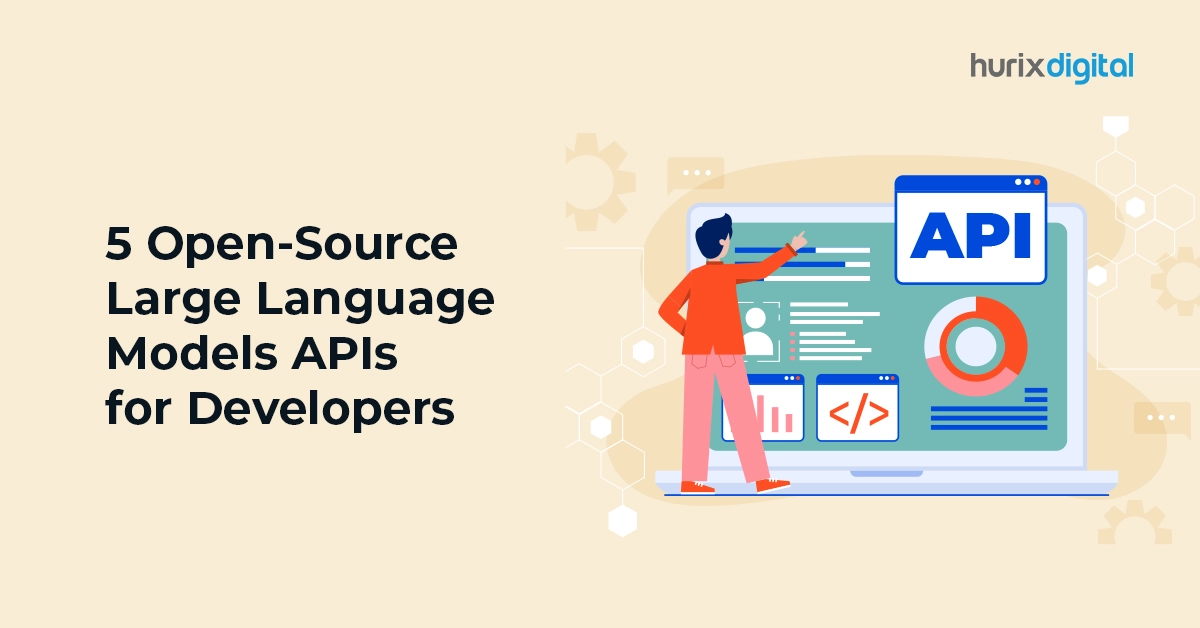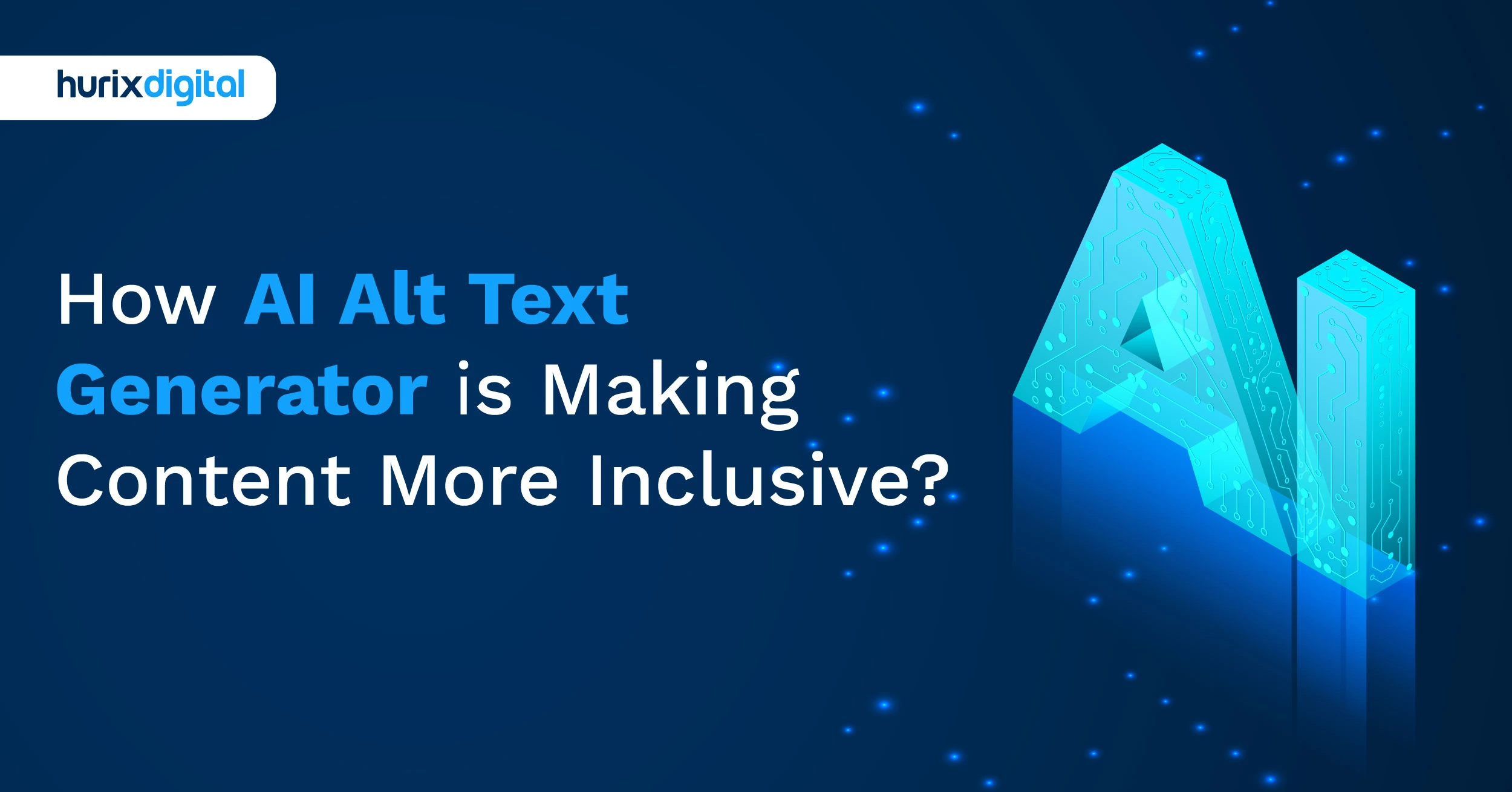
5 Open-Source Large Language Models APIs for Developers
Summary
Discover five open-source APIs for large language models that developers can use. This blog provides insights into available tools for integrating LLMs into applications.
In the world of artificial intelligence, Large Language Models (LLMs) have emerged as a powerhouse of innovation. These AI wonders come equipped with developer tools to ensure seamless integration into your projects.
Large Language Models (LLMs) tools empower developers of all kinds to create, experiment, and innovate with language. Additionally, these models improve our understanding of natural language and bring exciting text-generation possibilities to ensure that a wide range of applications benefit from advanced language capabilities.
Join us as we explore the intricacies of the top five open-source large language models, highlighting their features, benefits, challenges, and more.
Table of Contents:
- What are Large Language Models (LLMs)?
- 5 Open Source Large Language Models (LLMs) to Spark Your Creativity
- Final Words
What are Large Language Models (LLMs)?
AI systems that have been trained on copious amounts of textual data are known as Large Language Models (LLMs). These neural network-powered models can comprehend and produce writing that resembles a human’s linguistic patterns and style.
It also carries out tasks like:
- Natural Language Generation (NLG): Creating human-quality text, like poems, scripts, or marketing copy.
- Text Generation: Generating different creative text formats based on prompts or instructions.
- Translation: Translating text between languages with high accuracy.
- Question Answering: Answering questions in a comprehensive and informative way.
- Code Generation: Generating code snippets based on natural language descriptions.
Most Large Language Models (LLMs) were closed-source, which restricted their use and accessibility.
However, the emergence of open-source LLMs is altering the landscape by making these potent development tools more widely accessible and enabling developers of all skill levels to create. It not only expands the democratization of AI but also boosts collaboration and innovation within the development community.
Also Read: How Artificial Intelligence Shapes the Future of Accessible Design
5 Open-Source Large Language Models (LLMs) to Spark Your Creativity
Below are the highlighted Open Source Large Language Models (LLMs) poised to spark creativity in your development journey:
1. GPT-J: Your Accessible Powerhouse
The GPT-J is a 6-billion-parameter LLM developed by EleutherAI. It is a more accessible alternative to its larger cousin, GPT-3. Its open-source nature provides developer tools to integrate its capabilities into their applications. It helps generate creative text formats like articles and scripts to translate languages.
ChatGPT-J helps you build chatbots, translate documents, and answer your user’s questions. It even churns out creative content using Natural Language Generation (NLG) and model-serving tools.
Key Features
- Text generation
- Translation
- Question Answering
- Code generation
Benefits
- Free and open-source
- Large model serving capabilities
- Active community and development
Challenges
- Requires significant computational resources
- It can be less accurate than larger, closed-source models
2. BLOOM: The Multilingual Maestro
BLOOM, a 178-billion-parameter neural network created by global collaboration, shines with its multilingual prowess. It understands and generates text in 46 human and 13 programming languages. This makes it ideal for international projects.
Imagine building a travel app that translates for your users or a chatbot that converses fluently with customers worldwide. All with the help of Natural language Generation (NLG) and text generation capabilities.
Key Features
- Multilingual text generation and translation
- Code generation
- Question Answering
- Summarization
Benefits
- Multilingual capabilities
- Large model serving performance
- Supported by a diverse community
Challenges
- Requires significant computational resources
- It can be less accurate than smaller, monolingual models
3. LaMDA: The Conversational Chameleon
Want to build an engaging chatbot or virtual assistant that holds natural conversations? LaMDA can help.
Brought to you by Google AI, LaMDA is tailored for conversational AI, boasting a remarkable ability to generate open-ended, informative, and consistently engaging dialogues. As an essential developer tool, it empowers you to breathe life into interactive systems.
With LaMDA, you can go beyond scripted interactions, creating chatbots that resonate with human-like fluidity and virtual assistants that intuitively grasp user needs.
Key Features
- Conversational AI
- Dialogue Generation
- Question Answering
- Text generation
Benefits
- Focus on conversational fluency
- Google AI backing and development
- Active research and experimentation
Challenges
- Limited access to the entire model
- Primarily focused on conversational tasks
4. Jurassic-1 Jumbo: The Scalable Speedster
Developed by AI21 Labs, Jurassic-1 Jumbo packs a powerful punch within a 178-billion-parameter footprint. This makes it a compelling option for developers seeking a balance between performance and resource efficiency.
Key Features
- Text generation
- Translation
- Question Answering
- Code generation
Benefits
- Scalable architecture
- Efficient resource utilization
- Active development and community
Challenges
- It may lack the accuracy of larger models
- Less established community compared to others
5. Gemini: The Open-Source GPT-3
Developed by Google AI, Gemini, known as Bard, is the much-anticipated open-source version of the popular GPT-3 model. Gemini promises to democratize access to GPT-3’s capabilities. It helps developers to explore text generation, translation, and neural networks.
Gemini offers the power of GPT-3 to the open-source community. Its potential to revolutionize the LLM landscape is exciting for developers worldwide.
Key Features
- Text generation
- Translation
- Code generation
- Expected to offer similar capabilities as GPT-3
Benefits
- Open-source access to a powerful LLM
- Google AI backing and development
Challenges
- Performance and capabilities may differ from GPT-3
From GPT-J’s accessibility to BLOOM’s multilingual prowess, LaMDA’s conversational fluency, Jurassic-1 Jumbo’s scalable speed, and Gemini’s open-source potential, each model caters to unique developer needs. Stay tuned to the latest developments and advancements in the open-source community, as these models continue to evolve.
Also Read: Adapting Workforce L&D Programs to the Virtual and Hybrid Landscapes
Final Words
The open-source Large Language Models (LLMs) landscape rapidly evolves, paving the way for innovation and collaboration among developers.
It offers exciting possibilities for developers like you. By choosing these developer tools, you can explore new avenues for innovation and creativity. They help democratize access to AI and shape the future of human-machine interaction.
Are you ready to enhance the potential of Natural Language Generation (NLG) and build groundbreaking applications? We’ve got you covered.
At Hurix Digital, we stand ready to accompany you on this transformative journey. Our comprehensive suite of expert consulting, development, and integration services is tailored to empower you to utilize the full potential of these cutting-edge developer tools.
Connect with our expert team and get started today!

Vice President & SBU Head –
Delivery at Hurix Technology, based in Mumbai. With extensive experience leading delivery and technology teams, he excels at scaling operations, optimizing workflows, and ensuring top-tier service quality. Ravi drives cross-functional collaboration to deliver robust digital learning solutions and client satisfaction





